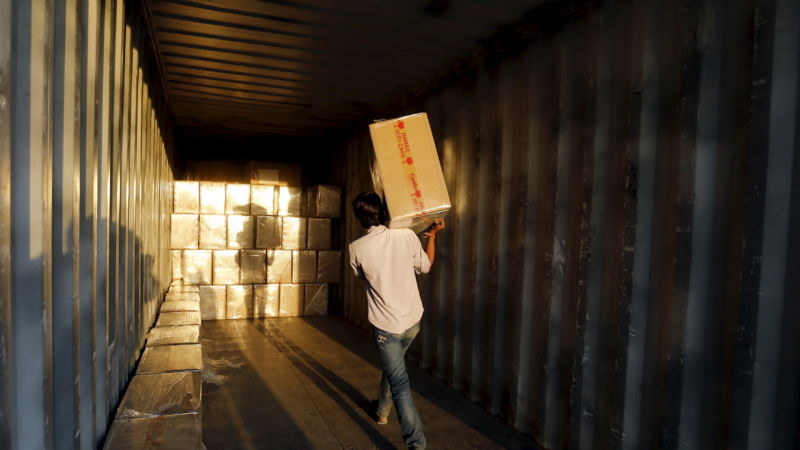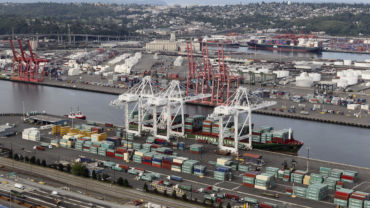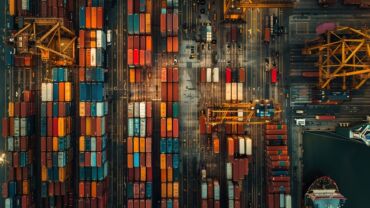There was virtually no aspect of business or individual lives that has not been affected by the global health and economic crisis of 2020 that came out of the COVID-19 pandemic, and global trade is no exception.
Indeed, trade across the world screeched to grinding halt in some cases. The World Trade Organization (WTO) estimated that global merchandise trade declined by 9% and that global GDP will fall by close to 5%.
These declines in merchandise trade were in line with products mostly tied to business cycles, including luxury items such as clothes, handbags, and travel. Whereas expected significant growth took place in trades of electronics as individuals transitioned to working from home, resulting in an uptick in purchases from households, businesses, and governments of electronics (this included upgrades to computers and information technology infrastructure.) And not surprising, the highest trade activities took place in personal protective equipment (PPE) with growth up to 92% in the second quarter of 2020 and up to 122% by May 2020.
WTO economists project modest trade volume growth to rebound to about 7% and global GDP to rise by 4.9% — a far cry from the 21% expectation prior to the pandemic. These economists believe that an effective vaccine could boost confidence, raising output growth and trade expansion by an additional 2%. Other factors that could nudge their predicted number even higher include the stock market and growth in new technologies, especially around e-commerce and artificial intelligence. This is because the pandemic has significantly stimulated the technology sector, and how it will continue to grow and create even more efficiencies provides great optimism to trade professionals.
Joanna Konings, a senior economist in International Trade Analysis at ING, echoes the WTO experts in that her expectation of increased global trade activities will come from consumer confidence. And this confidence will be spurred by the development and distribution of COVID-19 vaccines, she says, adding that it may take until 2022 to reach pre-pandemic volumes.

David Dollar, senior fellow at the Brookings Institute, wrote previously that we may not know for some time what the lasting impacts from the pandemic may be and how those factors will influence consumer behavior and impact trade. In developed countries, many employees may continue to work from home on a permanent basis, which of course will impact demand for cars, gasoline, and some extent clothing, Dollar writes, adding that this change could have a negative impact on the auto-making and clothing industries while having a positive impact on the electronic and technology industries.
Considerations on trade in 2021
As trade rebounds from the effects of the pandemic, a few experts have raised the concern that protectionism could become a key risk to the global economy. “The biggest risk to the developing world is protectionism often dressed up as national security protection,” explains Dollar. The U.S. currently taxes about half of the products coming in from China at a 25% rate; and in response, China’s imports from the U.S. have declined. Looking ahead, the U.S.-China trade dispute will continue under the incoming Biden administration, while we will see the de-escalating of other U.S. disputes. ING’s Konings notes that President-elect Biden will most likely keep his campaign promise to “work with our closest allies on trade… this could mean a reduction in steel and aluminum U.S. tariffs and the current threat of U.S. tariffs on E.U. cars eliminated.”
Further, Brexit’s impact on trade will present its own set of challenges for the U.K. and the E.U., including the physical component of moving goods between borders. New customs checks are now in place which allow for the verification of goods, their origin, and whether they meet safety standards. Naturally, this process will slowdown cargo moving between the U.K. and the E.U.
Other factors that could impact global trade include the appointment of a new WTO Director-General (said to be Nigeria’s Ngozi Okonjo-Iweala) who have to quickly get up to speed on administering the WTO’s role in distributing the COVID-19 vaccine, as well as addressing various, ongoing global trade disputes. In fact, the incoming Director-General is likely to have quite a full plate just preventing and avoiding future trade wars.
Like much else, there is a wait-and-see feeling among trade professionals as the world emerges from the pandemic crisis into whatever will be the next normal. Manufacturers of products and services have much to consider in the post-pandemic, post-Brexit world, especially with all the other geopolitical and environment concerns that can impact how goods and services are moved and sold across borders.







